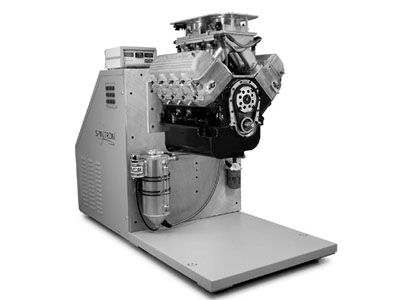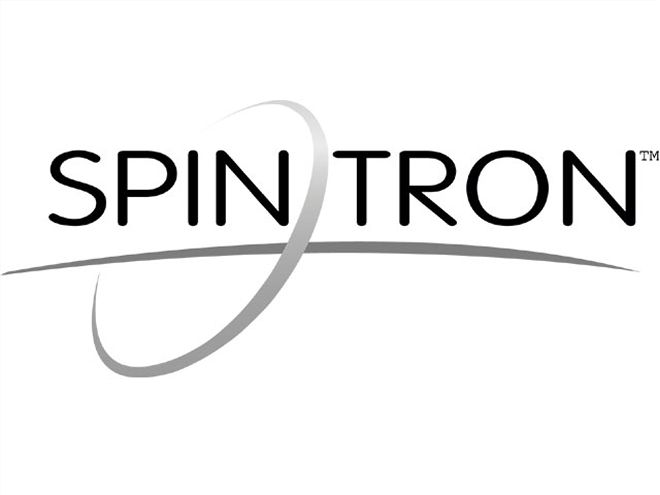

Ask any engine builder what the most important requirement of a race engine is and he's likely to say it's for an engine to last. Of course horsepower and other factors of an engine are vital as well, but if an engine doesn't last, what's the point?
In the early years, much of the testing of engine parts was more or less trial and error, and often the car that finished first was the car with the engine that didn't blow up.
Frequent engine failure motivated engine builders to come up with solutions to prevent such lethal incidents, and for years they have searched for ways to make engines survive the very high-rpm demands of the racing environment. Much of the research has happened in the dyno room and on the track during testing time.
As racing and technology have advanced, engine failure has been dramatically reduced, due in large part to the high-tech innovation of parts and methods by manufacturers and engine builders alike.
One of the most innovative tools that has come on the engine building scene is a device that many refer to as a spin fixture.
Spin Control
The so-called spin fixture found its beginning with a man named Bob Fox. For nine years, Fox has been at the helm of Trend Products in Warren, Michigan, where the main function of the company was the production of pushrods.
As his pushrod business grew, it became clear that in order to stay on the cutting edge of manufacturing, Fox needed to know more than anyone else about the dynamics of pushrods. "I needed to know definitively what a pushrod meant to an engine and what I could do to make it better," Fox says. "In order to do that I needed to do some testing. And in order to test, I needed to come up with some kind of a fixture that allowed me to see what happens to a pushrod when it's in operation. In the beginning, I had no thought of looking at anything else in the valvetrain, because I was a pushrod man."
That thought process gave rise to the idea of an electric fixture that could turn valvetrain components at a high rpm rate to simulate close-to-real operating conditions. In addition to turning the valvetrain, it was imperative to see what was taking place in regard to the pushrod actions.
With that as a design baseline, Fox set out to build a machine that would satisfy the goals of turning the valvetrain at sustained high rpm and showing the dynamics of that movement. After a great deal of engineering and consultation with many people in the industry, a machine began to take shape. As the project came to realization, this so-called spin-fixture machine was appropriately named Spintron.
Once the machine was developed, a surprising thing happened. Engine builders (especially in the Winston Cup ranks) immediately saw the value of the machine for much more than the investigation of pushrod dynamics. As a matter of fact, this was a time when engine builders became something of a consultant group to Trend Products. Through the engineering of Bob Fox and the needs of the engine-building community, the Spintron has become a must-have tool for many engine builders.
From conception to reality, the Spintron has come full circle, and today it is available to engine builders with a variety of options. In simple but accurate terms, the Spintron is an electrically driven, computer-controlled device that allows the unique opportunity to graphically see inside an engine when it's running at a full range of rpm values. From an informational standpoint, it supplies both visual and diagrammatic opportunities to understand what goes on inside an engine. It gives the user the opportunity to identify, document, and record vital characteristics of the valvetrain precisely.
If You Build It
Armed with the understanding of what a Spintron was, we turned to two of the best engine guys in the business to get a view of how this machine has become a functional part of their engine-building process. We spoke with Steve Wilson, director of engineering and R&D at Richard Childress Racing in Welcome, North Carolina, and John Barilka, head of valvetrain development at Hendrick Motorsports in Charlotte, North Carolina.
Both of these men realized from the beginning that the Spintron was a device that would yield volumes of information on the internal dynamics of an engine without ever taking the engine out of the race shop. This is an advantage offered by no other testing device, including a dyno. That fact, coupled with the enormous flexibility of the Spintron, has led to a whole new engine-development science-a science that until now has been largely impossible.
From the scientific perspective, the Spintron offers analysis of subject matter in all of the valvetrain component areas. Because of the sophisticated software included with this machine, engines can be run for lengths of time and rpm levels that reflect specific racetracks. That being the case, a complete analysis of the valvetrain is possible that will support conclusions related to how an engine will perform and what its endurance capabilities are.
Step Testing
To understand the dynamics of the engine system, Spintron users rely heavily on the endurance information provided by this device. Because it's computer-controlled, each element of the valvetrain can be reviewed at race rpm and endurance conditions. The machine provides opportunities for what is called step testing, which refers to the process of testing bolt-on components or a complete valvetrain at various speeds. Through preset rpm values, the Spintron automatically moves on to higher speeds and, while doing so, records and graphs data at each speed from a variety of sensors. This is an important source for the scrutiny of valvetrain and bolt-on engine parts for effectiveness and endurance.
For bolt-on parts, the Spintron represents an excellent opportunity to test for optimum performance of a variety of units. The machine can provide a database of vacuum, flow, and pressure readings for parts like oil pumps, fuel pumps, and power-steering units.
Beyond dynamic observations, and bolt-on-parts analysis, the Spintron provides the unique opportunity to look at and analyze each component of the valve-train to see how it can be made better. To that end, a lot of conversation goes on between engine shops and manufactures for the purpose of improving valvetrain elements. With this source of additional information, many of the valvetrain manufacturers now have an unprecedented amount of information on which to base their R&D. This kind of information sharing has helped the process of making better components for race engines take a major leap forward.
No stone is left unturned, and the users of this machine regularly take an in-depth look into each and every part of the valvetrain for specific parts.
"We use the Spintron to look at everything in the engine," says Barilka. "We regard this machine as an extremely valuable tool to analyze everything-camshaft, lifters, pushrods, rockers, keepers, retainers, springs, dampers, and valves.
"Much of what we learn obviously helps us in our engine program, but what we learn ultimately helps racers at all levels. What we do here in dynamic and endurance testing provides information to many manufacturers, and they in-turn make and sell parts that benefit racers at all levels, and that includes the Saturday-night racer. "
Rent-A-Spin
As a tool this machine has become very important to many in the industry, both in the manufacturing sector and the engine-building business. Independent engine builders such as Roberts Racing Engines of Mooresville, North Carolina, and manufacturing companies such as Competition Cams of Memphis and Iskenderian Racing Cams of Gardena, California, use the Spintron as a normal part of their R&D efforts.
Another company, CV Products of Thomasville, North Carolina, has taken the next logical step in the use of a Spintron. In addition to the R&D function, it will be offering the machine on a daily rental package to engine professionals. A program of this nature can obviously be a positive thing for any engine builders who don't currently have access to a Spintron.
Spin To Win
Clearly, with this machine added to an engine builder's arsenal of testing tools, the possibility of building a more bulletproof engine has been expanded to a previously unknown level.
As a specific science, not only has it given rise to an engine that will live longer, it has also provided an astounding opportunity to witness the internal movement of the valvetrain at virtually all levels of racing speeds. With that capability, engine builders, racers, and manufacturers all win.
The engine builder wins because of the ability to forecast engine performance and longevity. The racer wins because he has the confidence of knowing that his powerplant is reliable. And the manufacturer wins because it can develop new and better valvetrain parts to overcome any deficiencies discovered in engine development.
So it truly has been proven that engine builders, racers, and manufacturers see this machine as a way to spin and win.
Unlocked Secrets
Before the advent of the Spintron, many of the internal engine events remained locked inside the engine, leaving builders to make decisions based on their best estimates of valvetrain motion.
With the capabilities offered by a spin-fixture, there is now hard documentation of valvetrain incidents that lead to better performance and longer engine life. One example of this is a force known as valve bounce. As the name implies, valve bounce is the act of the valve bouncing when it closes during high-rpm environments.
The idea that valve bounce existed had been suspected for quite a while, but when the Spintron came on the scene the proof was clear, and it gave builders hard documentation of its existence.
This is just one example of the secrets that are being revealed in this spin science, however there are many other things that have also been learned. With this kind of information available, builders have the opportunity to change components to eliminate this kind of problem or find ways to tune the components and remove or lessen problems such as this.
There are some things that have been discovered inside the engine that go against conventional wisdom, and these have caused some rethinking. For the most part, engine builders have worked on the premise that lighter is better, but the Spintron has revealed the fact that lighter is not always best.
Richard Childress Racing's Steve Wilson put it this way, "One of the hardest things to convince an engine builder is that a heavier engine part might work better. It goes against the grain of what we have all been taught, but we have learned that lighter is not always better.
"The pushrod is a case in point. If too much stiffness is given up just to be lighter, we can see pushrod deflection, which can have a negative impact on both the engine performance and endurance. In that scenario, a slightly stiffer and heavier pushrod may be called for."